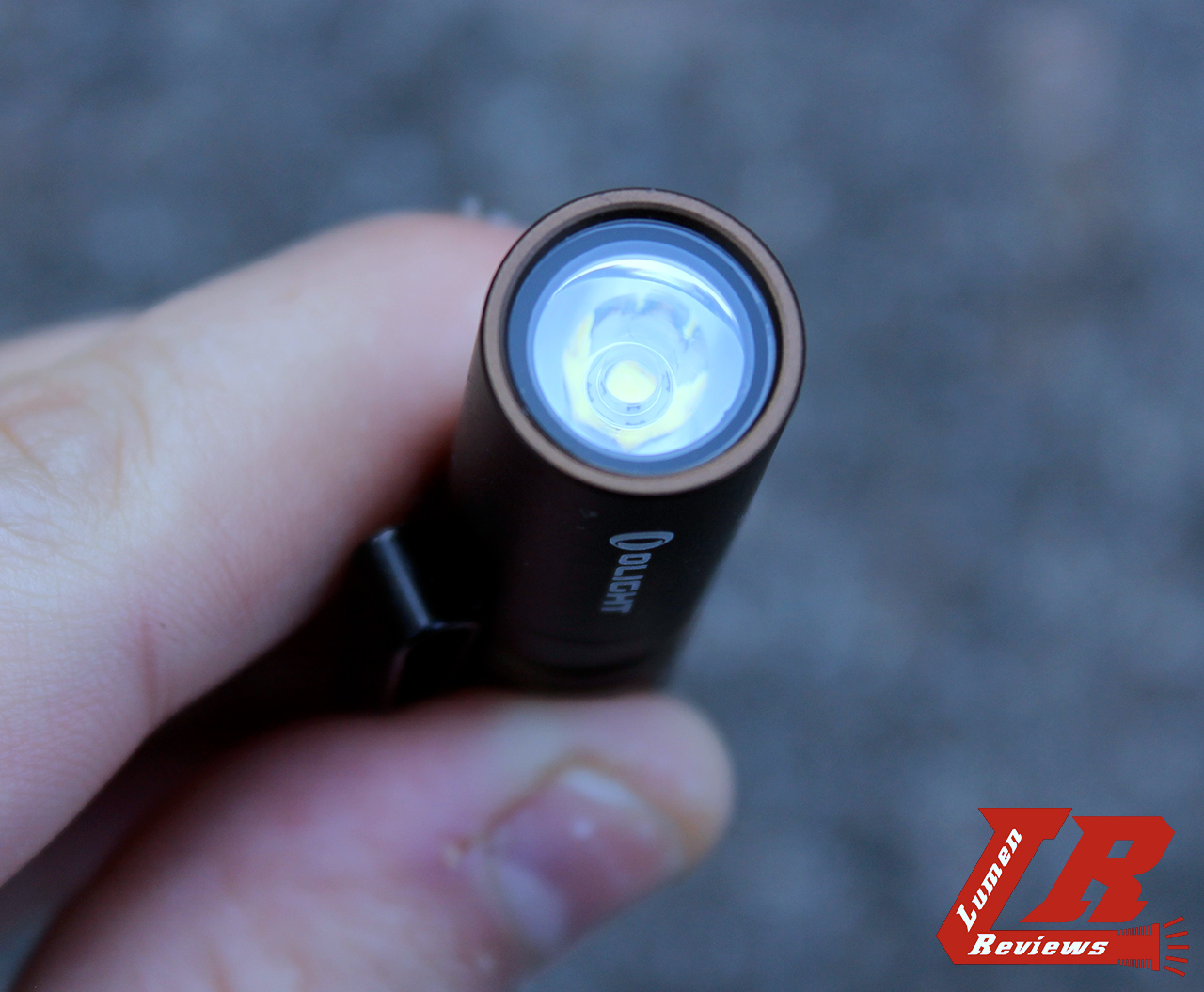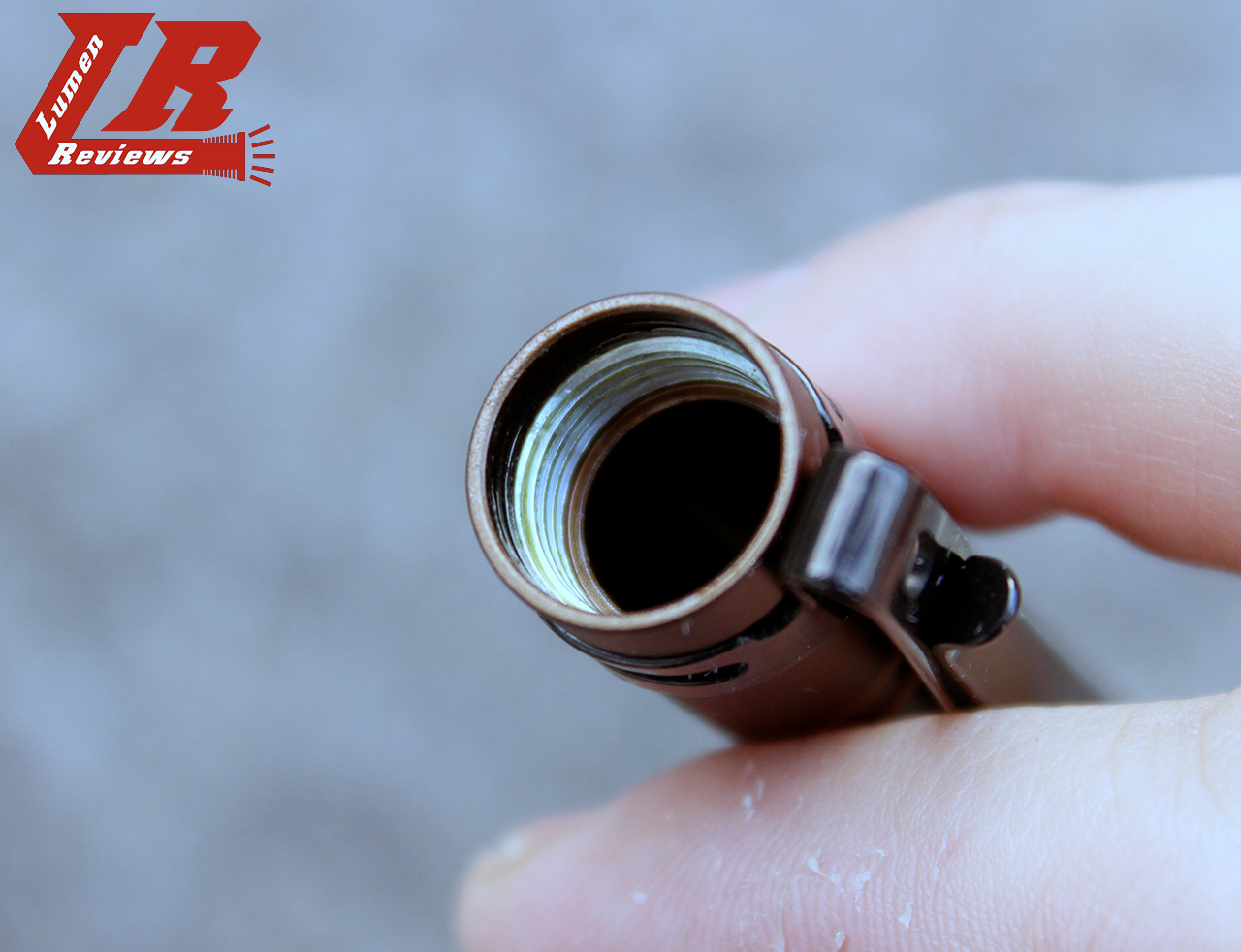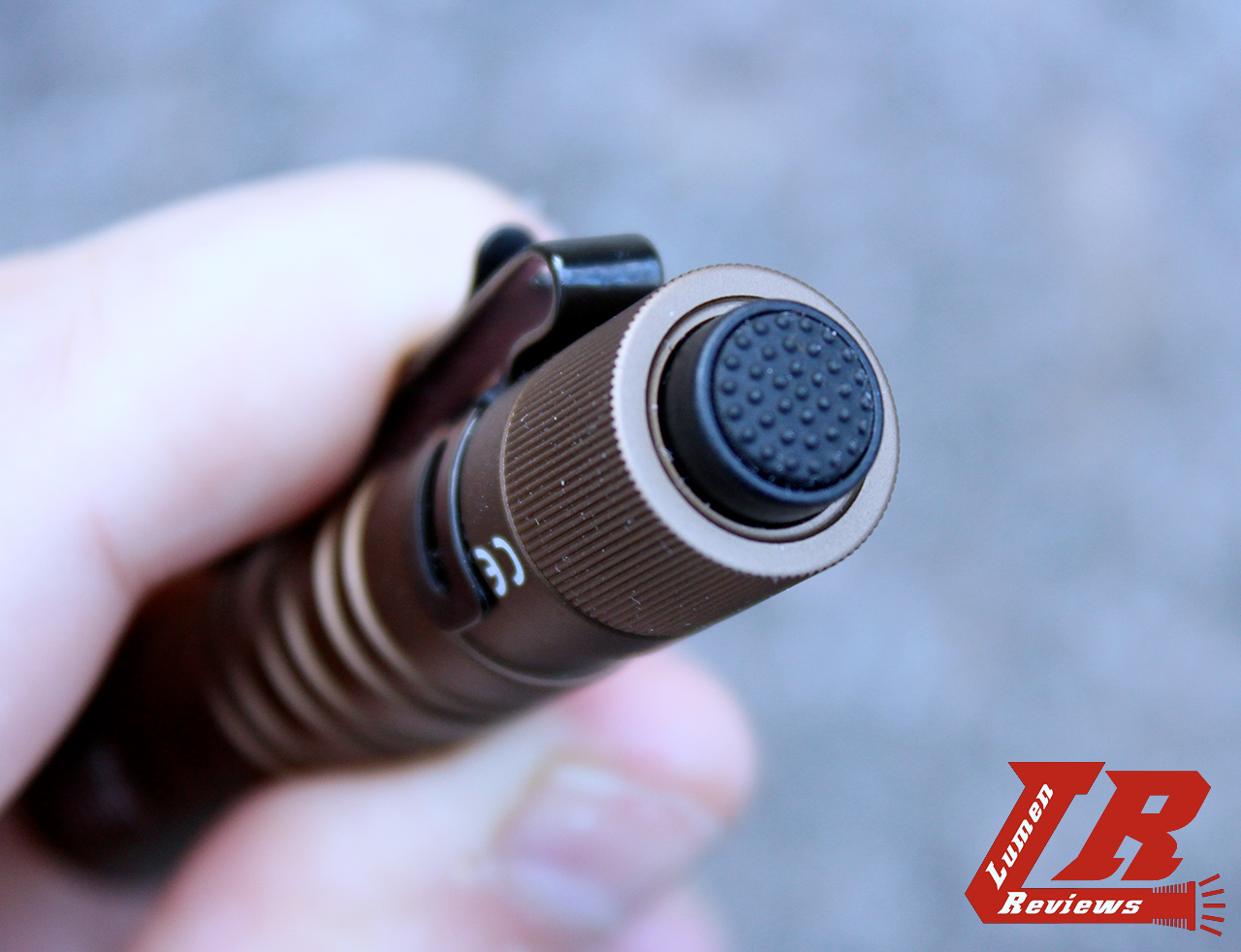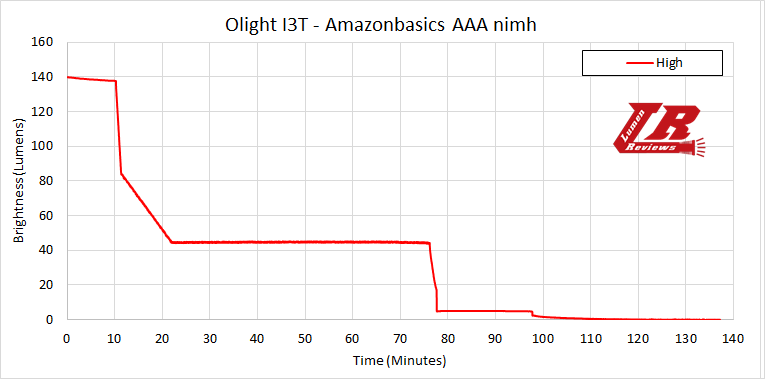I needed a new EDC light for my working bag (nowadays I rarely need a lot of light, I have at least a bigger light in my car, and an I1 as keychain on my car keys), so I looked for something light and compact, but still usable with one hand. Many years ago, this job was done by a
Lumintop Tool.
In the end I picked the Olight I3T EOS, and I bought it with my own money on sale on amazon.
The I3T EOS is a compact keychain/EDC light, running a Philips Luxeon T emitter, powered by 1xAAA battery. It is available in black and in tan (a limited run). I got the tan version.
The I3T EOS comes in this simple cardboard box, with all the specs on it


Inside:
The I3T EOS lamp with clip, manual (not shown), 1xAAA alkaline battery (not shown).


The anodization is well done and with a matte dark earthy color in my opinion (a very dark bronze or a dark brown), but a bit far from the "tan" advertised.


The I3T EOS is 89mm long, and 15 mm wide. The weight is 31 grams; 42 grams with the included alkaline battery or with an amazonbasics AAA nimh battery, and the clip. Here you can see it next to an amazon AAA nimh battery.

On the body of the light there is a spiral shaped milling, and on all the surface of the tailcap there is a very dense vertical milling. The clip is pressure fitted on the body, and allows to carry the light both head up and down. It also has a hole to attach it to a keychain.

The Philips Luxeon T emitter with the TIR optic.

The two part that make the I3T Eos: the tailcap and the body (the head is glued on the body).
The tailcap threads and O-ring come very well lubed and are trapezoidal cut. They are not anodized, so physical lockout is not possible.


The interesting mechanical button at the tailcap: there is a rubber tailcap switch cover, as for most flashlights, but on the I3T EOS, around it there is a plastic cylinder. So, the only really exposed part of the switch rubber cover is the top, with some knurling on it.
This means that lateral forces on the switch will not result in the activation of it, the only way to activate is a vertical push (that also requires some force). Under the tailcap there is a forward mechanical switch that allows for momentary activation.

UI
The UI is simple: there are 2 modes, low and high. The light doesn't have memory mode, and will turn on at low mode.
You can use the momentary function to cycle between low and high with 1 half and 1 full click (the first half click turns on the light at low mode, then release and make a full click, turning the light on at high mode).
Beamshots at 0.5 meters






Output and runtime
Measured with Amazonbasics AAA battery.



My thoughts
The light is well built and finished.
There is a curious regulation with the High mode, with a slow stepdown after the first 10 minutes, and another after the second, in order to conserve the battery.
The regulation on the tested level is good. Interestingly, when the runtime graphic stops the light will keep flashing with a rather high output. Not a common feature for a AAA battery light.
I like the simple interface with just 2 levels (no strobe or flashing modes), in accordance with most EDC needs.
I personally wish it had memory but it takes no time to switch to high mode when I need it.
In my EDC I prefer lights that can be operated with one hand, and the clicky operation of the I3T EOS, paired with its size, makes it a very good choice for me.
For my small-medium sized hands, the I3T EOS has the right size to be used in the cigar grip (the grooves on the body are positioned naturally between my fingers) or as a regular tailcap clicky light. A bit shorter and I might lose some light to my hand or my gloves.
The clip can be used in both directions, and it also allow you to attach the light to a baseball cap. I feel it lacks in grip strength in the head down position.
Beside the EDC use, given the characteristics of the light (including the price), it would be a good light to buy and store where it is not going to be used often, but when needed it's going to be there: car, toolbox, garage. With a baseball cap, it can easily be turned into a sort of a headlamp. Best coupled with a LSD nimh or a lithium primary cell.
I wish this light came with a neutral tint.
I wish this light had anodized threads so physical lockout was possible, but the stiff switch and its long run should prevent most unwanted activation.
Thanks to: AntoLed, Won, Zampa
Lumintop Tool.
In the end I picked the Olight I3T EOS, and I bought it with my own money on sale on amazon.
The I3T EOS is a compact keychain/EDC light, running a Philips Luxeon T emitter, powered by 1xAAA battery. It is available in black and in tan (a limited run). I got the tan version.
The I3T EOS comes in this simple cardboard box, with all the specs on it


Inside:
The I3T EOS lamp with clip, manual (not shown), 1xAAA alkaline battery (not shown).


The anodization is well done and with a matte dark earthy color in my opinion (a very dark bronze or a dark brown), but a bit far from the "tan" advertised.


The I3T EOS is 89mm long, and 15 mm wide. The weight is 31 grams; 42 grams with the included alkaline battery or with an amazonbasics AAA nimh battery, and the clip. Here you can see it next to an amazon AAA nimh battery.

On the body of the light there is a spiral shaped milling, and on all the surface of the tailcap there is a very dense vertical milling. The clip is pressure fitted on the body, and allows to carry the light both head up and down. It also has a hole to attach it to a keychain.

The Philips Luxeon T emitter with the TIR optic.

The two part that make the I3T Eos: the tailcap and the body (the head is glued on the body).
The tailcap threads and O-ring come very well lubed and are trapezoidal cut. They are not anodized, so physical lockout is not possible.


The interesting mechanical button at the tailcap: there is a rubber tailcap switch cover, as for most flashlights, but on the I3T EOS, around it there is a plastic cylinder. So, the only really exposed part of the switch rubber cover is the top, with some knurling on it.
This means that lateral forces on the switch will not result in the activation of it, the only way to activate is a vertical push (that also requires some force). Under the tailcap there is a forward mechanical switch that allows for momentary activation.

UI
The UI is simple: there are 2 modes, low and high. The light doesn't have memory mode, and will turn on at low mode.
You can use the momentary function to cycle between low and high with 1 half and 1 full click (the first half click turns on the light at low mode, then release and make a full click, turning the light on at high mode).
Beamshots at 0.5 meters






Output and runtime
Measured with Amazonbasics AAA battery.



My thoughts
The light is well built and finished.
There is a curious regulation with the High mode, with a slow stepdown after the first 10 minutes, and another after the second, in order to conserve the battery.
The regulation on the tested level is good. Interestingly, when the runtime graphic stops the light will keep flashing with a rather high output. Not a common feature for a AAA battery light.
I like the simple interface with just 2 levels (no strobe or flashing modes), in accordance with most EDC needs.
I personally wish it had memory but it takes no time to switch to high mode when I need it.
In my EDC I prefer lights that can be operated with one hand, and the clicky operation of the I3T EOS, paired with its size, makes it a very good choice for me.
For my small-medium sized hands, the I3T EOS has the right size to be used in the cigar grip (the grooves on the body are positioned naturally between my fingers) or as a regular tailcap clicky light. A bit shorter and I might lose some light to my hand or my gloves.
The clip can be used in both directions, and it also allow you to attach the light to a baseball cap. I feel it lacks in grip strength in the head down position.
Beside the EDC use, given the characteristics of the light (including the price), it would be a good light to buy and store where it is not going to be used often, but when needed it's going to be there: car, toolbox, garage. With a baseball cap, it can easily be turned into a sort of a headlamp. Best coupled with a LSD nimh or a lithium primary cell.
I wish this light came with a neutral tint.
I wish this light had anodized threads so physical lockout was possible, but the stiff switch and its long run should prevent most unwanted activation.
Thanks to: AntoLed, Won, Zampa
Last edited:

